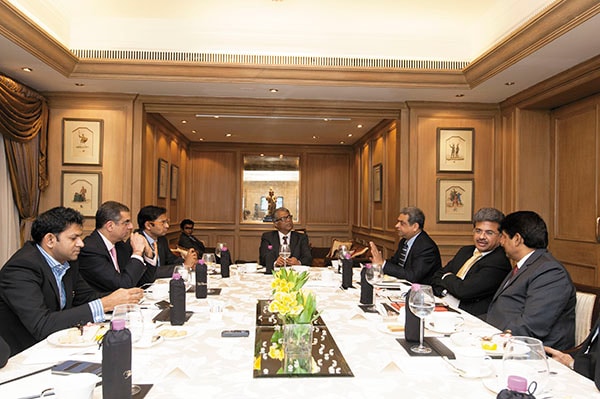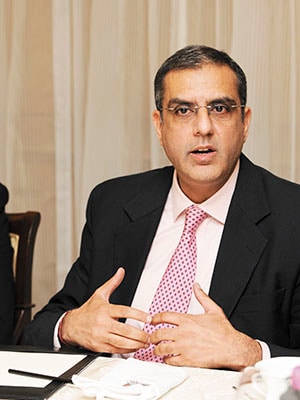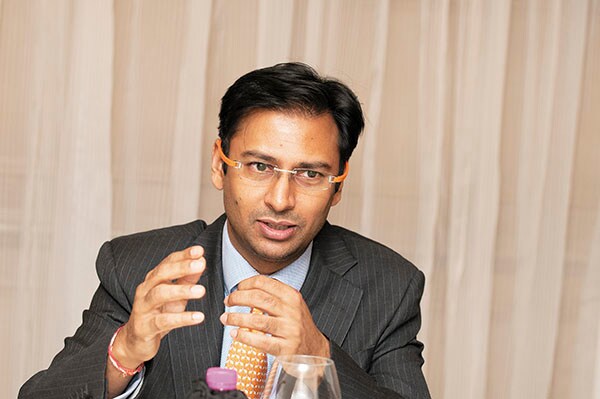
India's youth: Demographic dividend or disaster?
Given the country's demographic trend, experts believe the government should facilitate a dialogue with all stakeholders to devise solutions to employment-related problems
The BJP-led government came to power in 2014 with a mandate to fix a faltering Indian economy. Although ambitious campaigns like ‘Make in India’ and ‘Digital India’ have been rolled out, the ultimate yardstick with which the success of these initiatives will be evaluated is the level of employment they generate. And, if statistics are an indication, it’s an uphill task. According to experts, only 10 percent of the Indian workforce is in the organised sector; just 2.5 percent of the country’s working population has any vocational training, compared to the average of 60 to 70 percent in developed countries.
Of the 11 million students graduating from colleges each year, only 20 percent get jobs relevant to their skill sets. And though women comprise 49 percent of India’s population, they form only 21 percent of the workforce.
In the second season of the Forbes India CEO Dialogues: The Leadership Agenda, NS Rajan (member-group executive council and group chief HR officer, Tata Sons), S Premkumar (executive vice chairman and managing director, HCL Infosystems), Alok Tandon (CEO, Inox Leisure), Anil Valluri (president, India and SAARC operations, NetApp), Rahul Agarwal (MD and CEO, India Region, Lenovo), and Rohit Poddar (MD, Poddar Developers) discussed how the government and private employers can address employment-related challenges in India. Excerpts from the discussion moderated by R Jagannathan, Forbes India’s editor-in-chief:
R Jagannathan: Mr Premkumar, do you see employment as a big challenge for India? Also, is it homogenous across sectors?
S Premkumar: It is a dichotomous situation. On the one hand, we speak of not enough people getting jobs and on the other, we say there isn’t enough skilled labour in the country. From the point of view of the IT industry, a large portion of the population has been excluded from employment. Unlike in manufacturing, where a number of low-skilled jobs exist, the technology industry has completely stayed away from creating such jobs. Over a period of time, that has to change. Some companies have started de-skilling certain functions to a certain level of automation to help bring in more inclusive growth when it comes to employment generation and tap the lower end of the skill-set spectrum.
Jagannathan: Mr Poddar, the real estate, construction and infrastructure segment is one of the largest job creators in the country. But there appears to be a slowdown in the sector. Do you see things changing in a hurry?
Rohit Poddar: Real estate is a function of demand. The GDP is where it is right now, but at the ground level, we don’t see any change from when the economy was growing at 4.7 to 5 percent. From an affordable housing point of view, unless jobs are created and industrial output increases, consumption of real estate isn’t going to increase much. It hasn’t happened till now, but hopefully it will happen going forward.
On the skills front, in India, as in other OECD [Organisation for Economic Cooperation and Development] countries, the lack of necessary skills among the youth and the resultant lack of employability is a function of our education system. From our own perspective, we are trying to see how we can interact more with the universities and devise training programmes for students, so that the required skills can be imparted at an early stage, as opposed to us running an expensive training programme at the customer’s expense later.
Jagannathan: Mr Rajan, you belong to a business conglomerate that is into various businesses. What is the hiring scenario from the perspective of a large business group like yours? Are you seeing a lot of net hiring?
NS Rajan: Yes, we are hiring. But if you look at employment in the formal sector, it is only 10 percent of the total working population of the country. If you look at vocational training, only 2.5 percent of the people in the country are vocationally trained. In any other developed country, 60 to 70 percent of the working population has received vocational training. The common section of the Indian population which can be counted as being the poorest of poor, from the backward classes and with low levels of literacy, is around 306 million people. So, the problem is less to do with whether a company is hiring or not. There is a larger onus on us as a nation to ensure that the under-utilised potential across the country gets tapped. If we don’t do that, we aren’t doing much with the demographic dividend that we have.
Jagannathan: So are you saying that the big companies by themselves can’t address the employment challenges in the country?
Rajan: Yes, because 90 percent of the people are engaged in informal employment. Companies can play an important role in the process of creating employment, but it is largely a function of the way in which the economy is progressing.
Jagannathan: Mr Tandon, you represent that part of the services sector which is aligned to the Indian film industry. What do you make of the employment scene as far as your own sector goes?
Alok Tandon: Every multiplex of ours requires a lot of people. Depending on its size and location, it can range from 35 to 100 people. When it comes to employment, 99 percent of the people working at our theatres are locals. Even though we use a lot of technology, recruitment of manpower will continue because there are several functions, including food and beverages service, box office and ushering of guests, that need people. We get a lot of people to work for us, but do we get adequate trained manpower? The answer is no. The gap has to be bridged by extensive training.
Jagannathan: Mr Valluri, your business of delivering software and services to manage and store data is doing well with businesses and services going digital. How is the job scenario in your sector? Also, is it a segmented sector where only highly technically qualified people get jobs?
Anil Valluri: NetApp employs around 2,000 people in India and is present in three segments—development of operating systems and software, sales and support to customers, and back-end operations. In all three verticals, we face the problem of not finding enough skilled talent. Also, there is the challenge of retention. Fresh graduates come on board for a year and despite all the handholding that we provide, they leave the organisation for higher salaries. We have actually moved on to hiring MTech [Master of Technology] students from BTech [Bachelor of Technology] candidates earlier, as we find that two extra years of academics instill greater maturity in potential employees; they tend to stick around for two to three years.
Jagannathan: Mr Agarwal, your company does some manufacturing in India. But the technology industry is going through a shift with PCs becoming obsolete and being replaced with mobile devices. How does this affect your recruitment strategy?
Rahul Agarwal: I am quite sure the PC is not going to be dead as people need devices of a certain size for some computing purposes. But yes, a bulk of the growth is in the mobile side on one hand and the server space on the other. As a company, we are getting into both these segments in a serious manner. As far as employment is concerned, companies like ours work on a highly leveraged model. We may be doing billions of dollars in revenues, but we may not even have 1,000 people supporting it directly. We also support job creation indirectly through 1,200 exclusive retail outlets across the country.
The larger point is that 30,000 people get into the workforce in India each day and given the demographic trend, this number may move to 40,000 very soon. So, in the context of what we are discussing, I think it isn’t a disaster waiting to happen, but one that is right in front of us.
Jagannathan: Let’s look at the macro picture. It was suggested that the demographic dividend that we have may, in fact, be a demographic disaster. We are creating jobs for a very small sub-section of people who are globally mobile. So what is the solution for inclusive job creation?
Premkumar: There are 11 million students who graduate every year. Only 20 percent of them get jobs that are relevant to their skill sets. In the IT industry, the average amount that companies have to spend on new recruits for training is $6,000 per person. That is why one of the initiatives that we have taken up is to set up a company fully dedicated to training. Students have to spend six months with us after college and we make them ready for the industry.
Tandon: Unlike in the West, in India, an 18-year-old works to earn money to support his family, and not his own education. If there was a system of social welfare in the country, whereby senior citizens could be taken care of by the state after retirement, maybe their children would have invested more in their own professional training. But in the absence of that, companies need to help a person joining the organisation develop his/her skills. It is a way of giving back to society.
Jagannathan: From the point of view of policy, what is holding us back from skilling people and ensuring job creation?
Rajan: The quality of education, both primary and secondary, is woefully low in our country. A large part of our population is unable to find appropriate avenues for education and employment. The other issue is that of skills. We have a very poor level of vocational education. One needs to have a basic level of skilling to be able to add value to the workplace. A lot of companies, including ours, are coming together to facilitate and support the skilling of potential workers. But what companies can do is only a drop in the ocean. The government should take cues from the work being done by corporations and follow up to make a meaningful dent in the problem.
Poddar: The problem is also with the data. Where is the data in the country that speaks of the gap that exists in what the industry wants and the level of skills that people have? The interests of the students, recruiters and academic institutions have to be eventually aligned. And for that, there needs to be a dialogue between all the stakeholders.
Premkumar: There are around 7,000 Industrial Training Institutes (ITIs) in India, but most of them are defunct. These ITIs were built many years ago to provide skilled labour to small and medium enterprises. But over time, these industries have disappeared or have relocated. So, in many areas, the problem is that there is an ITI, but the neighbouring industrial corridor that existed earlier isn’t there anymore and there are no avenues of employment for those getting trained at these centres.

NS Rajan
Rajan: The advantage of these ITIs is that there is physical infrastructure in place, but there is a huge shortage in terms of skilled trainers. The ones that are running independently are properly functional. Those ITIs that have been adopted by certain corporate entities are doing well.
Jagannathan: What are some of the initiatives that the government and the private sector can take to address the jobs challenges facing India?
Poddar: The government should facilitate a dialogue between companies, the educators and itself to understand the extent of the problem and devise solutions.
Tandon: The academic curriculum needs to be changed. We have to move away from the concept of a paper degree and lay greater emphasis on vocational education.
Agarwal: The government should focus on accelerating the economy and as and when GDP growth picks up, new jobs will get created automatically. Growth is the best skill development agent for a country like India.
Valluri: There is an acute realisation that there is a problem. Whether the high proportion of youth to our overall population is a demographic dividend or disaster is a discussion that is now on the table. With time, we’ll see how effective the steps taken in the direction of making our youth more employable are. Companies, as part of their CSR initiatives, need to participate in schools and colleges and share their capabilities and knowledge. We have to invite students from academic institutions for internships and short training courses to build capability.
Rajan: Two-thirds of the shareholding in the Tata Group is with the Tata Trust and the money made by promoter entities through dividends is spent on social causes.
The enormity of the overall problem worries me and only the government as an institution can handle a problem of this magnitude. This has to be done in partnership with India Inc and the captains of industry who have the necessary knowledge and experience of building enterprises.
Premkumar: A significant amount of investment from the Shiv Nadar Foundation is going into education and skill development. On an industry level, business leaders spend a significant number of hours per month to teach at various sessions and create faculty. We have vocation clubs across the country that are doing very well. From the government’s point of view, the ITIs should be revamped. As the extent of the problem is very large, measures like tax breaks to incentivise companies investing to promote skill development may also be contemplated.
(This story appears in the 30 November, -0001 issue of Forbes India. To visit our Archives, click here.)







